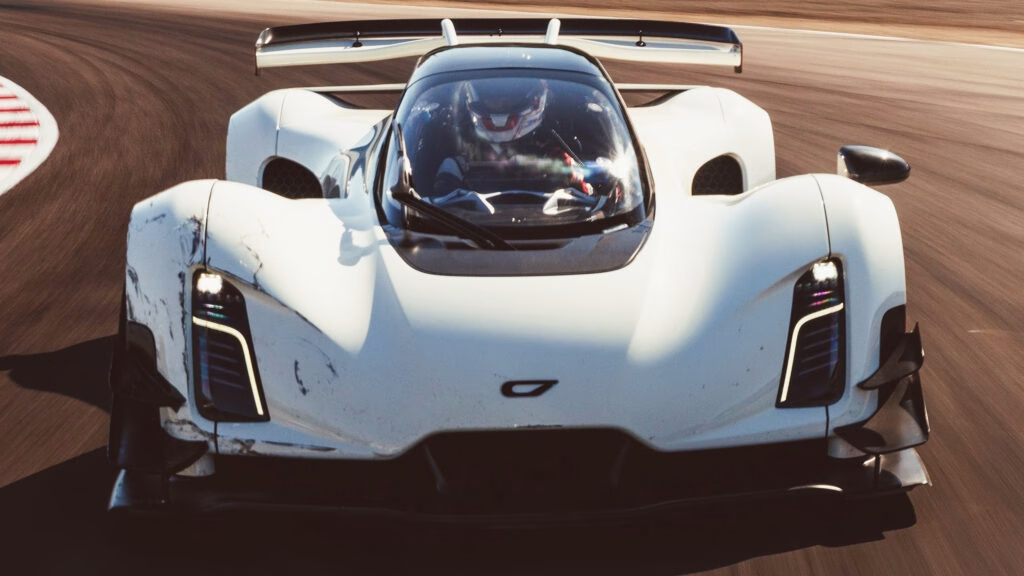How Did the Czinger 21C Shatter Five Track Records in Just Five Days?
If you’ve been following the world of hypercars, you’ve probably heard whispers about the Czinger 21C—a two-seater, V8-powered hybrid that’s been making waves for all the right reasons. But what’s the real story behind its recent record-breaking blitz across California? Let’s dig into how this American upstart managed to topple lap records at five legendary tracks in just five days, and why it’s turning heads far beyond the car enthusiast crowd.
What Sets the Czinger 21C Apart From Other Hypercars?
Most hypercars boast eye-watering specs, but the Czinger 21C brings something genuinely different to the table. For starters, it’s built using advanced 3D-printing techniques, which allows for a lighter, more rigid chassis—think less weight, more speed, and sharper handling. Under the hood, you’ll find a 1,350-horsepower hybrid drivetrain. That’s a 2.8-liter twin-turbo V8 paired with three electric motors (two up front, one at the rear). The result? A staggering 0-60 mph time of just 1.9 seconds and a curb weight under 2,900 pounds. That’s lighter than most family sedans, but with the power of a small jet.
But the real kicker is how Czinger has focused on real-world usability. Unlike many hypercars that live pampered lives on trailers, the 21C was driven over 1,000 miles on public roads as part of its record-setting campaign. That’s not just a flex—it’s a statement that this car isn’t just for the track or the showroom.
Which Tracks Fell to the 21C—and By How Much?
Let’s get specific. Czinger didn’t just cherry-pick easy circuits. The 21C tackled some of California’s most iconic and challenging tracks, each with its own quirks and history.
WeatherTech Raceway Laguna Seca: The 21C already held the production car lap record here, but it wasn’t satisfied. Last year’s time of 1:24.75 was impressive, but this time, the car shaved it down to 1:24.39. For context, that’s faster than the Koenigsegg Jesko Attack—a car that costs millions and is revered for its track prowess.
Thunderhill Raceway Park: Here, the 21C clocked a 1:48.30, beating the previous record by 3.39 seconds. In racing, a tenth of a second is huge. Three seconds? That’s a landslide.
Sonoma Raceway: The 21C set a new best of 1:35.05, outpacing the old record by 0.70 seconds. Sonoma’s a technical, twisty circuit—this is no small feat.
Willow Springs Raceway: Czinger’s machine posted a 1:19.73, beating out the Porsche 911 GT2 RS by 1.35 seconds. The GT2 RS is no slouch, so this is a statement win.
The Thermal Club: On the full circuit, the 21C’s 2:03.17 lap was a jaw-dropping 10.33 seconds faster than the previous record. That’s not just breaking a record—it’s obliterating it.
All times were independently verified by Racelogic, a trusted name in motorsport data. No smoke and mirrors here.
How Did Czinger Pull Off a 1,000-Mile Road Trip and Still Break Records?
Here’s where things get wild. Most manufacturers would trailer their hypercar from track to track, keeping it pristine and pampered. Czinger did the opposite. They drove the 21C over 1,000 miles on public roads, hitting five circuits in five days. That’s a grueling schedule for any car, let alone a 1,350-hp hybrid with racecar DNA.
This approach wasn’t just for show. It was a calculated move to prove the 21C’s reliability and road-worthiness. According to Czinger’s CEO, Lukas Czinger, the campaign was about pushing boundaries and setting new benchmarks—not just for lap times, but for what a hypercar can be. The team’s willingness to subject their flagship to real-world conditions speaks volumes about their confidence in the car’s engineering.
What Does This Mean for the Future of American Hypercars?
For years, European brands have dominated the hypercar space. But the Czinger 21C is changing the narrative. It’s not just about raw speed; it’s about innovation, adaptability, and a willingness to rethink what’s possible. The use of 3D-printing in manufacturing, the hybrid powertrain, and the focus on both track and road performance are all signs that Czinger is playing a different game.
Industry analysts have taken note. According to a 2023 report from J.D. Power, consumer interest in high-performance hybrids has surged by 18% year-over-year, with younger buyers especially drawn to brands that blend cutting-edge tech with sustainability. Czinger’s approach—building a car that’s both blisteringly fast and road-legal—fits this trend perfectly.
Why Should Enthusiasts and Everyday Drivers Care?
You might be thinking, “That’s cool, but I’m not buying a hypercar anytime soon.” Fair point. But the innovations pioneered by Czinger have a way of trickling down. Lightweight construction, hybrid drivetrains, and advanced manufacturing techniques are already influencing mainstream models. Today’s record-setting hypercar tech could be tomorrow’s standard equipment on your daily driver.
Plus, there’s something undeniably inspiring about seeing a small, ambitious team take on the giants and win. It’s a reminder that fresh ideas and relentless determination can still shake up even the most established industries.
The big takeaway? Breaking records isn’t about perfection—it’s about smarter adjustments. Start with one change this week, and you’ll likely spot the difference by month’s end.

